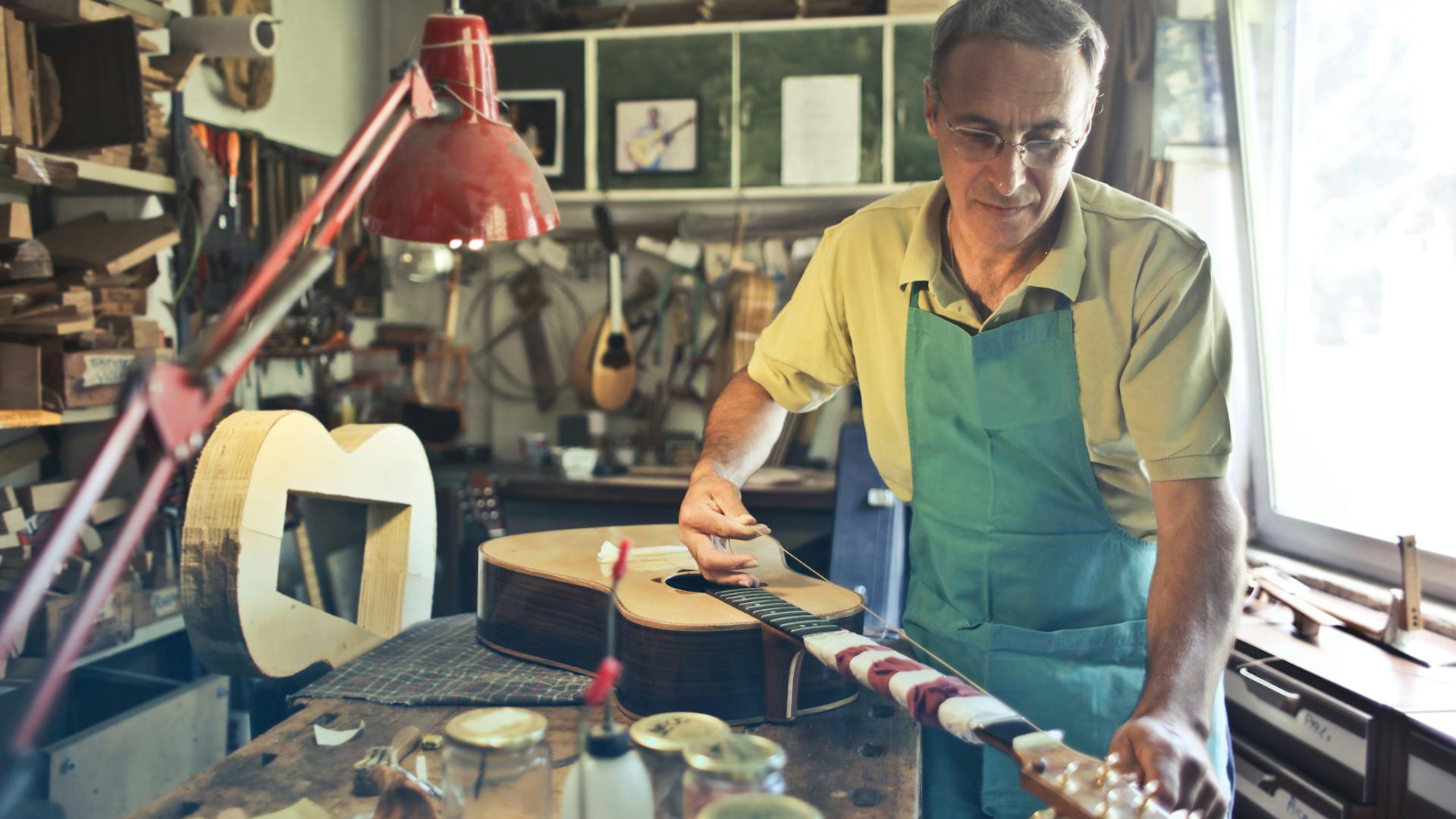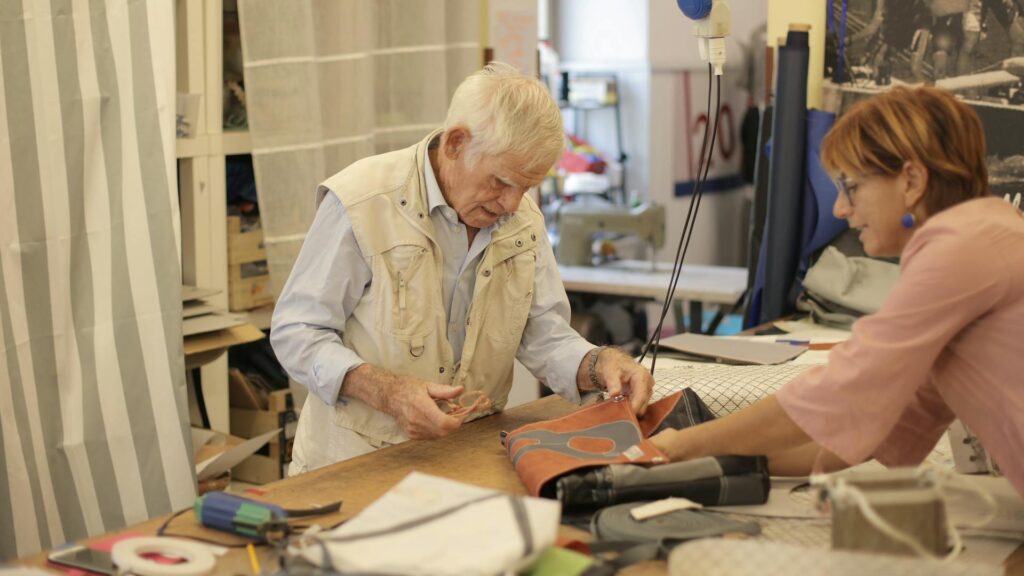Science
You Do It Automatically. And Yet, You Fall Into the Algorithm Trap
23 December 2025

Craftsmanship evokes the image of a person creating a limited number of items for their use and for a select group of people, without relying on advanced technology. However, when we delve into this topic with experts, we uncover an incredibly vibrant and intriguing world. What does craftsmanship look like in the 21st century? Is advanced technology, accelerating and simplifying the production process, an adversary of craftsmanship?
“Quality, manual labor, and a lot of time” is how Katarzyna Maniak, who creates personalized leather handbags under the brand Beautifulthings, describes craftsmanship. Foundational for craftsmanship is the individual and their abilities, known as the knowledge of the body, or Greek mētis. This does not mean, however, that machinery does not assist in the creation process.
My handwork involves machine sewing. This is considered handmade. Since I run a sole proprietorship and handle everything myself, I need tools that facilitate production since I do not order semi-finished products. I also want my clients not to wait too long for their items
– states Maniak.
Ewa Klekot PhD, a cultural anthropologist, identifies the main difference between the work of a craftsman and a factory worker as follows: the former oversees the entire production process – even if they do not perform every task themselves – as opposed to a factory worker who only handles a segment of the process. Another crucial element is the craftsman’s attitude towards the world and the materials they work with: patience, responsiveness to change, ingenuity, and humility towards limitations. These qualities stem from the aforementioned mētis. Katarzyna Głos, founder of the La Glina ceramics workshop in Kraków, also supports this viewpoint:
I’ve noticed that when we work together in a good mood during workshops, the objects we create are more eye-catching. Other times, the entire group is very focused and calm, and the vessels come out polished and perfectly even. When someone is anxious, I can see that tension reflected in the finished piece.
A craftsman does not merely use the material but collaborates with it. This collaboration with the material is also crucial in the context of skill transmission.

In the past, when craftsmanship was the primary means of producing various goods, masters would pass on their skills to apprentices. As Klekot explains, they abstracted their mētis and attempted to teach the apprentice through demonstration and explanation. Today, extracted skills can be translated into mathematical algorithms and uploaded into machines.
I use an embroidery machine. I need to input the design into a design program before embroidering it onto a handbag. This isn’t easy. Fortunately, my husband, who is an expert in this field, handles it
– laughs Katarzyna Maniak.
Students Magdalena Mojsiejuk and Paweł Lasota undertook a far more unconventional task for their diploma project Sknoceni. They first carefully observed the process of knitting, then described it with the appropriate algorithm, and programmed the Kuka robot to weave similar structures out of copper wire.
While humanity bases its development and improvement in quality of life on technical innovations, these advancements are also a source of anxiety. The Industrial Revolution, for instance, introduced machines that significantly changed production but also led to job losses. The craftsmanship that can collaborate with the latest technological solutions, such as robots and artificial intelligence, reminds us that technology itself is a product of human labor and can be harmoniously integrated into our work.
We recommend: From Boardrooms to Baking Bread: The Rise of the Trad Wife
A key characteristic of every craftsman is the personal relationship they establish with their clients. As Adam Marelli, an American cultural photographer, notes, a tailor in the past could have 500 clients and thrive. Today, a tailor might still have 500 clients, but they are spread across 35 different countries. The local market or workshop in a townhouse has evolved into an Instagram account, a Facebook fan page, and a personal website. This is how Marelli describes his business operations:
I primarily sell online. Initially, it was through handmade portals that offered a platform and product promotion for a commission. I also have my own website, and I must ensure everything is clear, well-described, and satisfying for both the client and Google’s search algorithms. Sometimes I use ChatGPT, but it often makes significant mistakes! It doesn’t have the same knowledge of the material as I do.
The internet serves as a means to connect with customers. As Marelli observes:
If a craftsman couldn’t be found online, they would become an endangered species.
Maniak is active on Instagram. The owner of Beautifulthings emphasizes the role of building relationships with people:
I often talk about my work through anecdotes. I show the behind-the-scenes process. Many people are engaged, and that’s great!
Craft products are visible elements of culture created by people. Despite globalization, they remain unique to different regions. Adam Marelli, who documented the work of Japanese craftsmen, observed that they do not invent new things but rather perfect what they have inherited from their ancestors.
The Japanese are masters of ceramics, and I think they love bringing things to perfection
– notes Katarzyna Głos.
I worked for two years in a ceramic studio with people from all over the world. It broadened my horizons significantly. For example, a colleague from Mexico had a different approach to ceramics, bringing out different textures. In Poland, we prefer light ceramics, while in Mexico, it’s the opposite: dark and rough
– recalls the craftswoman.
Local crafts become the hallmark of a country or specific region. Consider Polish Łowicz cutouts, Kashubian embroidery, or rafting. The latter may not produce objects but relies on a highly personal cooperation between the person, the raft, and the pole, requiring great skill and the appropriate mētis.
We recommend: Where There’s a Will, There’s a Way? The Key to Success in Life
Craftsman-made products are more expensive than those offered by chain stores. Purchasing such items can be mere affectation unless the buyer knows what they need and wants to “connect” with the acquired object. Marelli notes that when someone seeks a knife or guitar made by a craftsman, they do not ask for the best or most expensive items. They look for what suits them best – matching their culinary or musical skills – and what feels most comfortable in their hand. A factory-produced item loses this individualization.
When asked why make clay mugs when ready-made ones are available, Głos laughs and responds:
At home, I only have one mug from IKEA, and I use it only when the rest are dirty. The texture of the mug, the material, and the awareness that it is handmade make my coffee taste different. I have various plates at home that I made myself, and I can use them according to my mood. This gives the meal a greater significance – it’s no longer just about eating.
Personalized craftsmanship also creates a space where people build relationships. La Glina Workshop regularly hosts pottery workshops and courses. It is one of the few places where one can learn this art.
This place is made by people. I have never met so many people in such a short time. We form great relationships and that is the most beautiful part
– emphasizes the founder.
Translation: Klaudia Tarasiewicz
Polish version: Osobista relacja i Instagram kluczem do sukcesu. Rzemiosło w dobie AI


Science
22 December 2025

Zmień tryb na ciemny